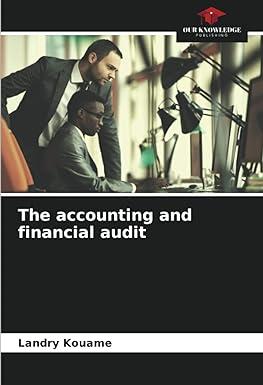Question
Ervin Equipment, a manufacturer of exercise and workout equipment for sale to institutions, uses job costing. The following transactions occurred in January: Purchased $84,000 of
Ervin Equipment, a manufacturer of exercise and workout equipment for sale to institutions, uses job costing. The following transactions occurred in January:
Purchased $84,000 of materials.
Paid $89,000 cash for utilities, power, equipment maintenance, and other miscellaneous items for the manufacturing shop.
Issued $6,900 of supplies from the materials inventory.
Issued $92,000 in direct materials to the production department.
Incurred direct labor costs of $82,000, which were credited to Wages Payable.
Paid for the materials purchased in transaction (1).
Incurred $15,000 in indirect labor costs, which were credited to Wages Payable.
Applied overhead on the basis of 155 percent of direct labor costs.
Recognized depreciation on manufacturing property, plant, and equipment of $19,100.
Returned $1,420 of the materials in transaction (3) to inventory.
Paid the for the wages incurred in transaction (5).
| Beginning | Ending | |
|---|---|---|
| Materials Inventory | $ 31,500 | ? |
| Work-in-Process Inventory | 52,000 | ? |
| Finished Goods Inventory | 182,400 | $ 121,000 |
| Cost of Goods Sold | 248,800 |
Required:
Prepare journal entries to record the transactions.
Prepare T-accounts to show the flow of costs during the period from Materials Inventory through Cost of Goods Sold.
Journal entry worksheet
- Required B
Prepare T-accounts to show the flow of costs during the period from Materials Inventory through Cost of Goods Sold.
|
Step by Step Solution
There are 3 Steps involved in it
Step: 1

Get Instant Access to Expert-Tailored Solutions
See step-by-step solutions with expert insights and AI powered tools for academic success
Step: 2

Step: 3

Ace Your Homework with AI
Get the answers you need in no time with our AI-driven, step-by-step assistance
Get Started


